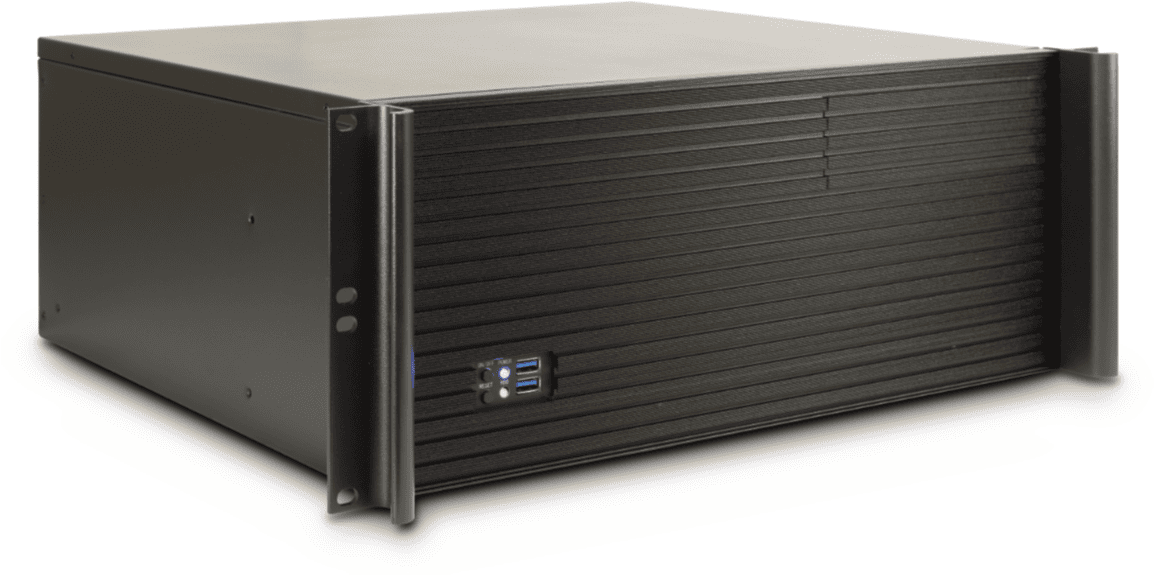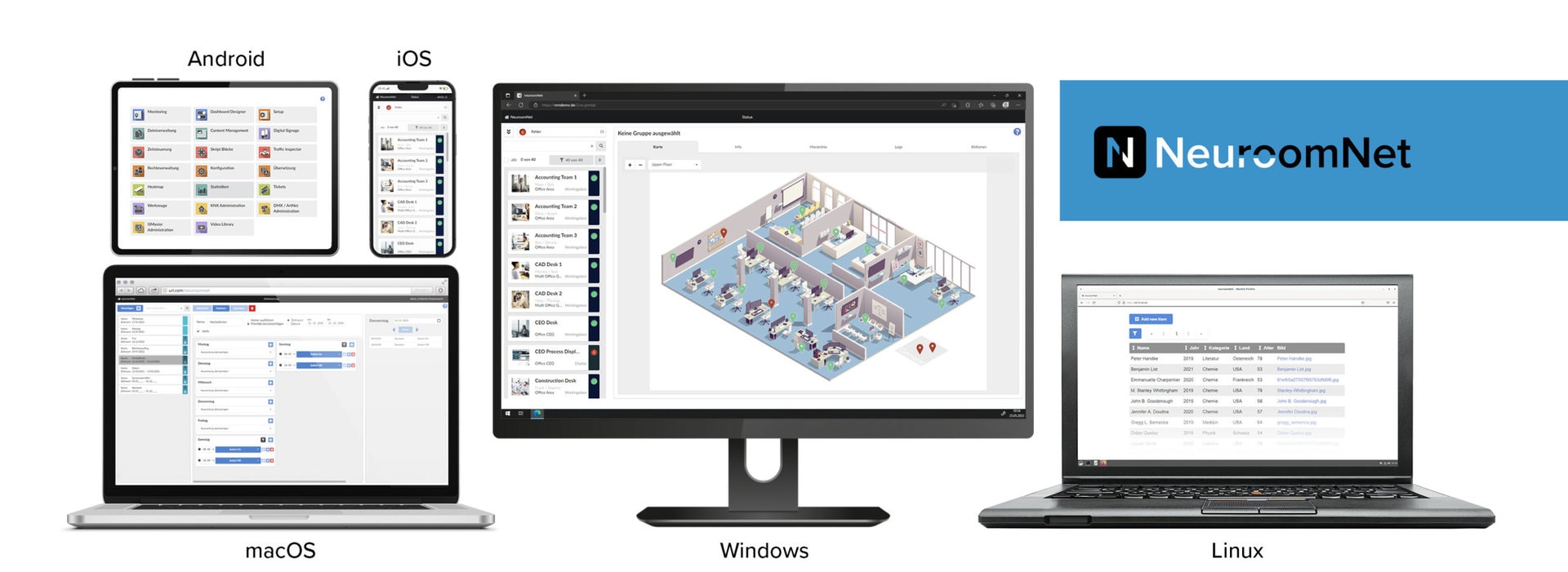Home » Platforms »
NeuroomNet on Microsoft Windows
Media control, media management and building management on Microsoft Windows basis

In the Windows version, NeuroomNet Server is delivered on a Virtual Machine (VM) alongside Windows. This is a Microsoft Windows Pro version.
Performance:
The hardware supports all NeuroomNet license types and is suitable for large installations. NeuroomNet can manage several thousand NeuroomNet components on this server and control them accordingly. All computer components are optimally coordinated to ensure the shortest possible response times.
The memory space is designed to store even extensive setups and to create corresponding loggings.
Need a lot of storage space? No problem!
The storage space should be expanded if larger data volumes of digital media (videos, images, etc.) are to be managed via the NeuroomNet CMS or used with the integrated digital signage module.
Depending on the interval and number of recorded values, for example for heatmap cameras, a memory expansion may also be useful.
Furthermore, memory made available in the network (e.g., memory in the network) can be used. e.g. a NAS system) can also be integrated into the NeuroomNet system.
Let’s talk about your application!
Optional hardware extensions:
It is possible to expand the hardware with more hard disk storage as well as manage it in a RAID.
Extensions such as redundant power supplies can also be made.
Contact us!
Recommendation:
We recommend a Windows-based NeuroomNet system if it is explicitly desired that all network systems of an installation are based on Windows, e.g. to administer them with various tools in the domain environment.
It must be kept in mind that the Windows operating system must be continuously updated by your IT department to prevent security gaps.
As an alternative to a dedicated NeuroomNet Windows server, the ‘On Premise’ solution is available, whereby NeuroomNet can be operated on your Windows server in a virtual machine.
Alternative:
Linux-based Neuroomnet Server L4001
Notice.
Users can of course access the system via all common operating systems with current browsers.

For more examples and explanations take a look at our documentation.